Hi Everyone!
I wasn't lying about a two week cadence for updates! Mailchimp is charging us a fortune to maintain the mailing list. So, we're going to use it!
Better Shields
For the OpenMV Cam RT launch we're upping our game when it comes to shields. For too long they have been basic low functionality addons. Moving forward we want you to actually be able to build real applications using our technology - not just make demos.
We've got six shields to talk about today. So, without further adieu I'd like to introduce the...
PoE Shield
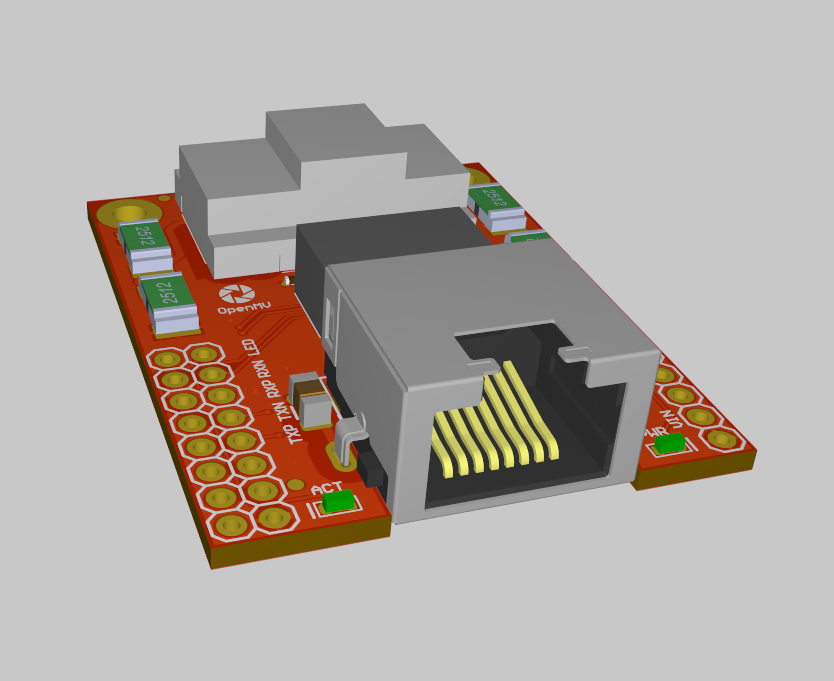
The PoE shield is designed to fit on the back of your OpenMV Cam RT and gives you a 10/100 Mb/s IEEE 802.3af PoE complaint Ethernet Interface capable of providing your OpenMV Cam with 7W of power (however, note that the camera internally will never use more than 2.5W). We're leveraging the AG9905LP ultra-miniature PoE module to give you this functionality. The PoE Shield accepts power from PoE Mode A or B configurations ensuring that it should work with pretty much any PoE power supply. Finally, we integrated all the required filters to deal with EMI and have robust Transient Voltage Suppression (TVS) onboard. You can find the schematic for the shield here.
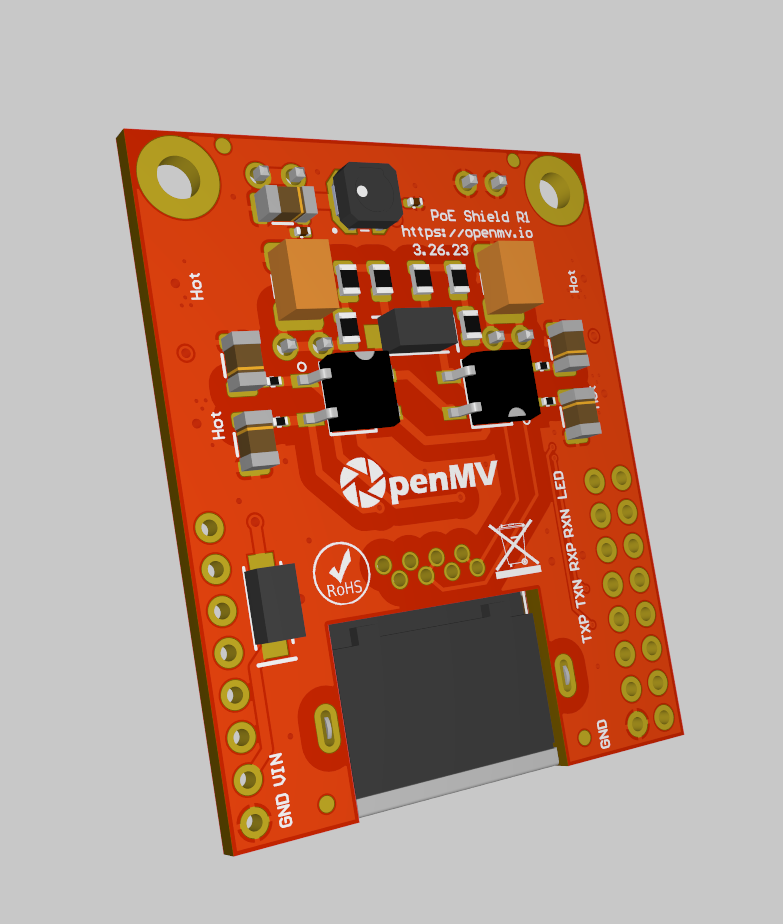
Note that PoE shield requires a minimum load of 1W - otherwise the AG9905LP module makes a whining noise. So, in order to meet this at all times the shield has four 100ohm resistors to ground in parallel - hence the hot labels on the shield.
PIR Shield
With the OpenMV Cam RT you're going to be able to fully shutdown the device to reduce power consumption to less than 50uA. After you do this you need an interrupt to wake you up. What better way than with a PIR motion detector!
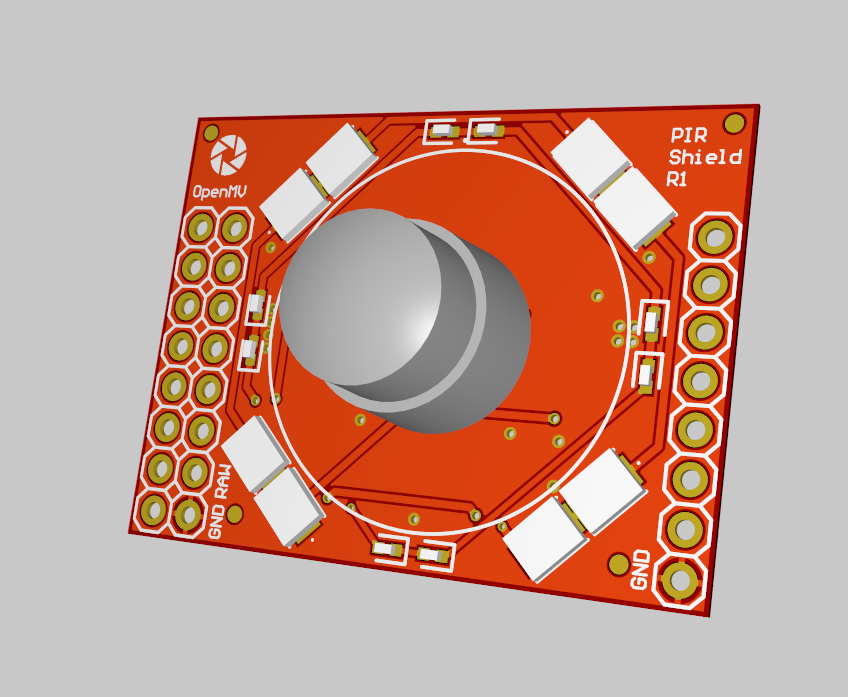
The PIR shield supports the EKMB line of PIR Sensors from Panasonic Electric Works which draw 6uA! It comes with their smallest, low-profile, unit by default, which has a 5 meter range and 110° field-of-view. Additionally, the shield can be customized to use the many other larger range and field-of-view modules available.
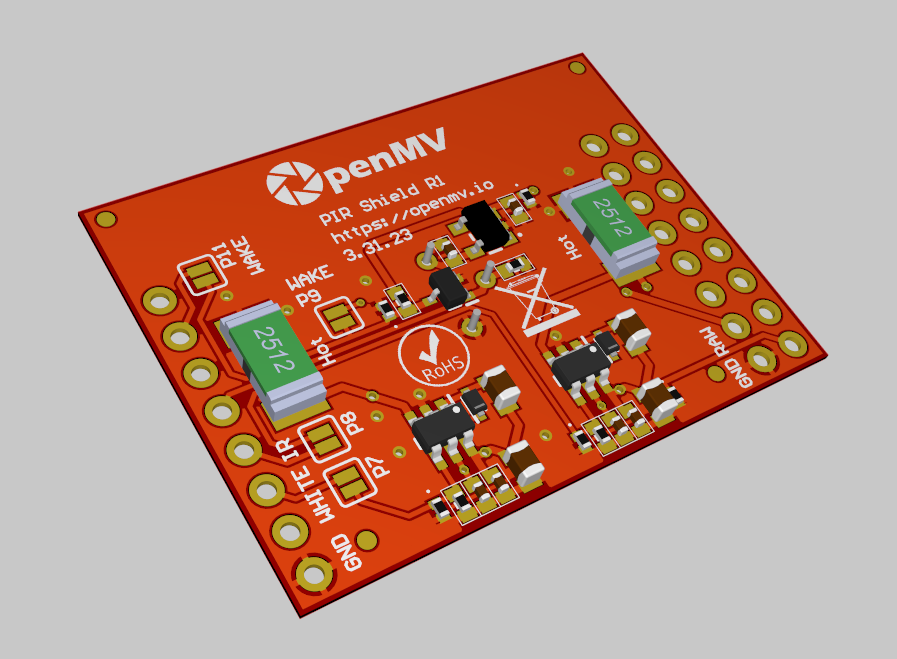
But, what's motion detection without illumination? That's why we added eight high power white and IR (850nm) LEDs on the PIR shield. Both LED chains can be controlled via PWM independently. Finally, to make stacking shields more flexible all I/Os are connected to the pin headers via solder bridges (some of them are connected by default which is not shown in the render). So, you can disconnect features on the shield to make your shield stack work for your application. You can find the PIR Shield schematic here.
CAN & RS232 Shield

Now for more connectivity! I'd like to introduce the CAN & RS232 shield. It features a 8 Mb/s CAN-FD Capable PHY, with selectable termination resistors, and a 1 Mb/s RS232 Capable PHY. With the CAN & RS232 Shield you should have no problem interfacing your OpenMV Cam with other Microcontrollers on a robot or in an industrial system. You can find the CAN & RS232 Shield schematic here.
However, best of all... it features a wide input range voltage supply!
(Yes, I noticed the labels are messed up on the shield above. That will be fixed).
What's a Wide Input Range Voltage Supply?
Glad you asked! This means you can give the CAN & RS232 Shield an input voltage between 6-36V. Want to power your OpenMV Cam with a 7.4V LiPo Battery? No problem. 12V Battery from your Car? Go ahead. 24V from an industrial bus? Do it!
Also, we've got reverse voltage protection on the input along with heavy TVS protection. Feel free to plug your camera into a really long power cable.
But there's more!
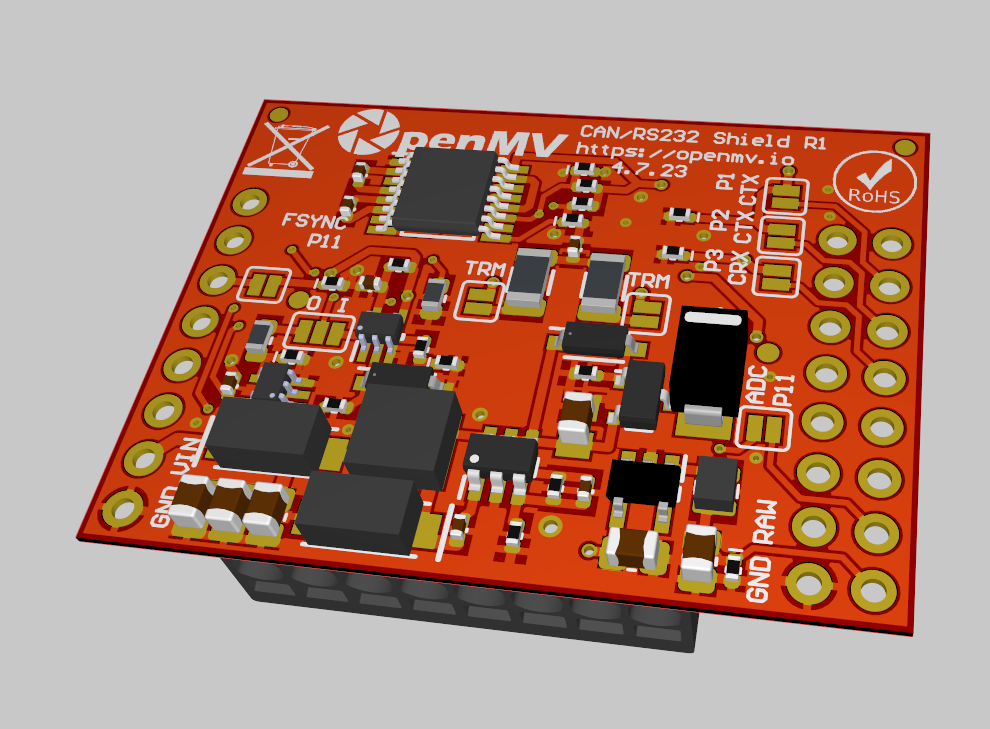
The CAN & RS232 Shield also features a 0-5V analog input with reverse and over-voltage protection which buffers and scales that 0-5V input to a 0-3.3V for your OpenMV Cam. The analog input also features a selectable load resistor so that you can interface with 4-20mA current sensors.
And finally, there's a flexible trigger I/O. By default it acts as a 0-5V input with reverse and over-voltage protection that you can use to sync your OpenMV Cam to an external trigger. However, you can optionally change this input to a 0-5V output that has short-circuit protection.
What's that terminal block header?
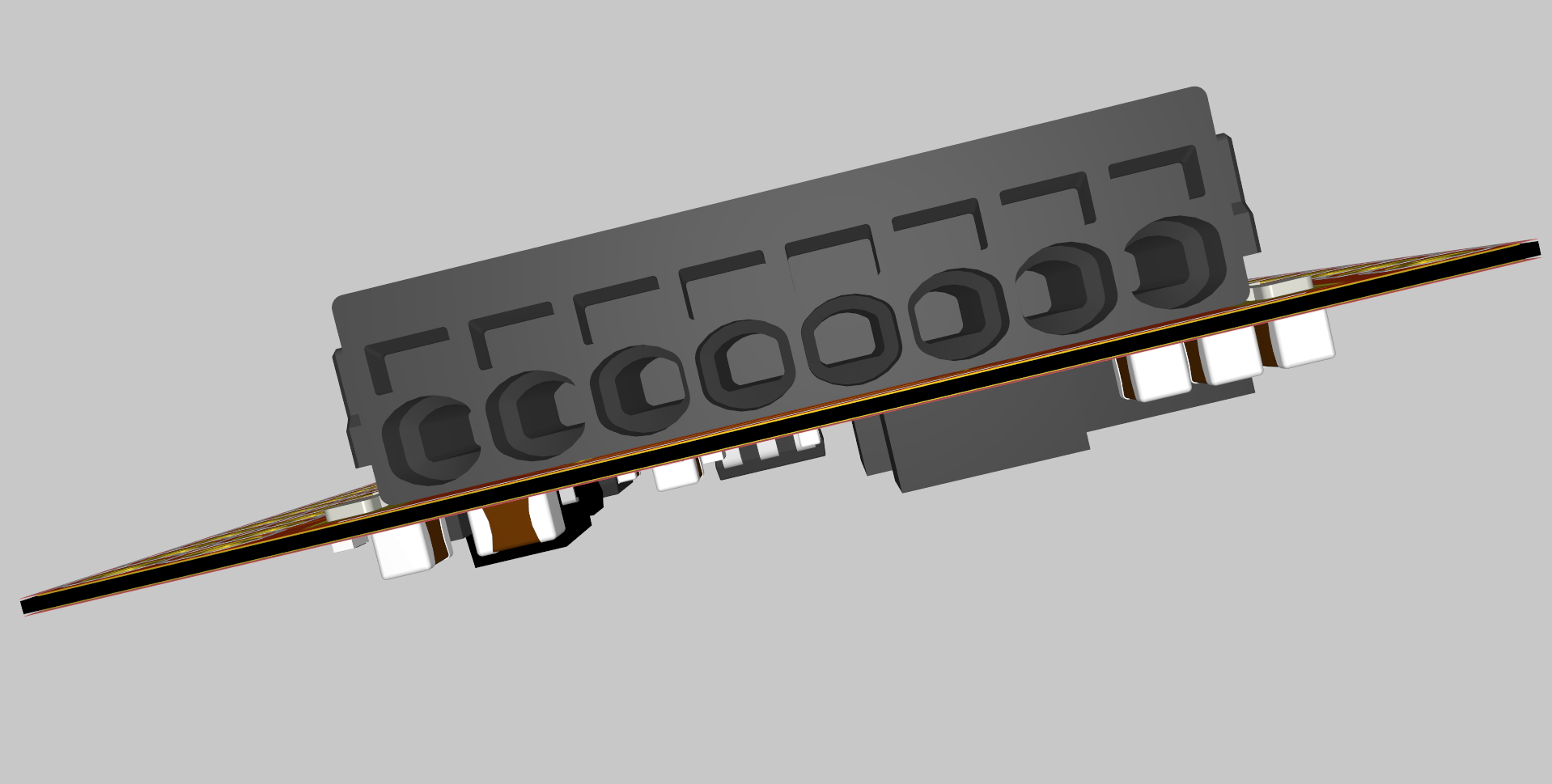
We're not going to have terrible terminal blocks on OpenMV Cam shields anymore. It's time for high quality (but, not high-cost) headers. So, we're putting Phoenix Contact Push-In connectors for our shields. These type of headers hold onto wires inserted into them via a spring latch. So, they don't chew into wires like screw based terminal blocks and don't loosen up during vibration and shock. This means you can be confident your wires will stay in the header on your robot using your OpenMV Cam no matter the action it sees.
(You get the wires in and out using a flat head screw driver that you stick in the top rectangle area of the terminal block which releases the spring temporarily).
RS422-485 Shield
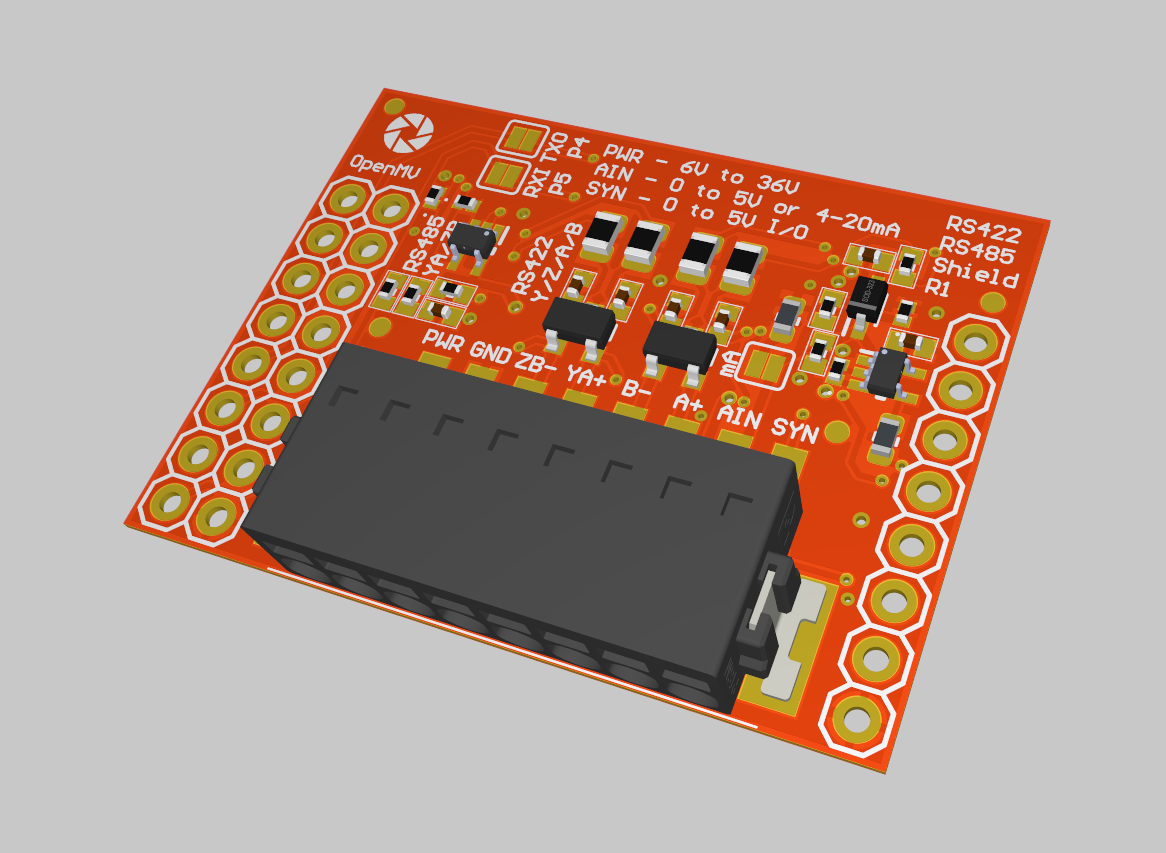
The RS422-485 Shield is for professional OpenMV Cam users deploying the system to industrial applications. It's powered by the THVD1426 RS485 transceiver which is able to automatically determine the bus direction without need for a data enable signal (which the OpenMV Cam RT's UART does not provide on our pin header). The THVD1426 is capable of 12 Mb/s. So, you shouldn't have any problem integrating your OpenMV Cam into a MODBUS application or even a DMX-512 Universe. There are two THVD1426s onboard which allow the shield to seamlessly work in RS422 and RS485 applications (but, not at the same time). The schematic for the RS422-485 Shield is here.
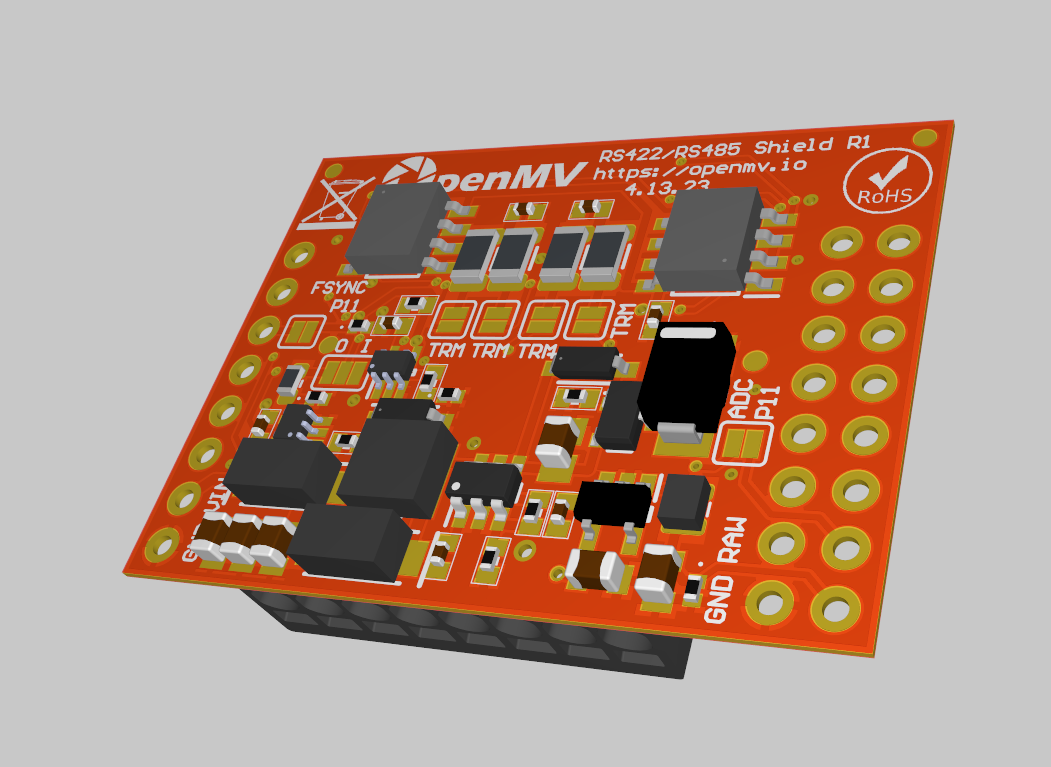
Like the CAN & RS232 Shield previously the RS422-485 Shield features and same wide input range voltage supply, analog input, and trigger input/output.
Driver Shield
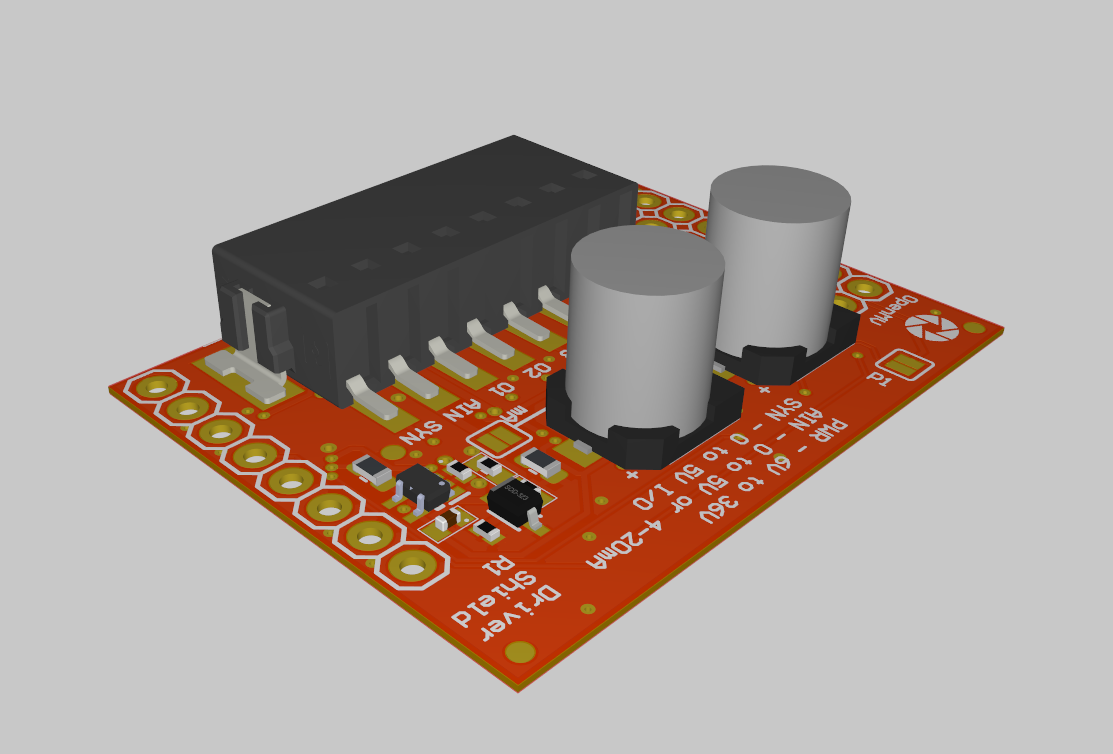
The Driver Shield is a new version of our Motor Shield with much better features. It has the same wide input range voltage supply, analog input, and frame sync input/output pin as previous boards. And... two DRV8876RGTR 3A current limited motor driver's onboard which can handle the 6-36V input voltage range! This means the driver shield can easily handle your 12V robot motors, or that 24V solenoid. Best of all, the driver shield uses different I/O pins on your OpenMV Cam than the PoE Shield, CAN & RS232 Shield, and RS422-485 Shield so that you can use it as the same time as those other shields. You can find the Driver Shield Schematic here.

Even cooler, the DRV8876's can operate in different modes:
- By default the DRV8876's onboard operate with a DIR/PWM interface where you use your I/O pins to control the direction and speed independently of two attached motors.
- However, you can also put the DRV8876's into a mode where you have a full H-Bridge Interface where you directly control each side of the H-Bridge. This allows for more advanced motor control.
- Finally, if you just want a high power I/O driver you can operate the DRV8876's in Independent Half-Bridge mode where each driver gives you two 3A push-pull outputs.
Finally, since each driver is independent you can mix and match the above.
Relay Shield
More shields! Yes, I was busy getting some ideas out of my head.
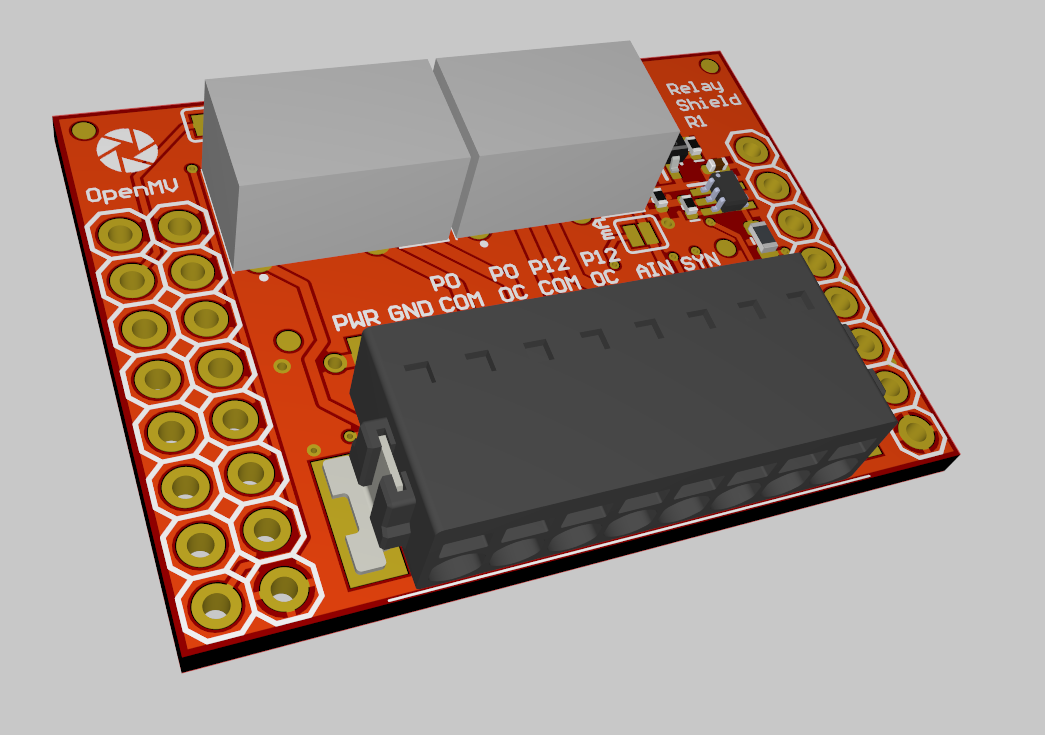
So, the Relay Shield has the same standard features as the other shields. It's not a particularly complex shield. It just gives you two independent Normally Closed or Normally Open relay outputs that can handle up to 60W of power. This means you can use it to control 2.5A loads at 24V DC or 0.5A loads at 120V AC - your choice. You can find the schematic here.
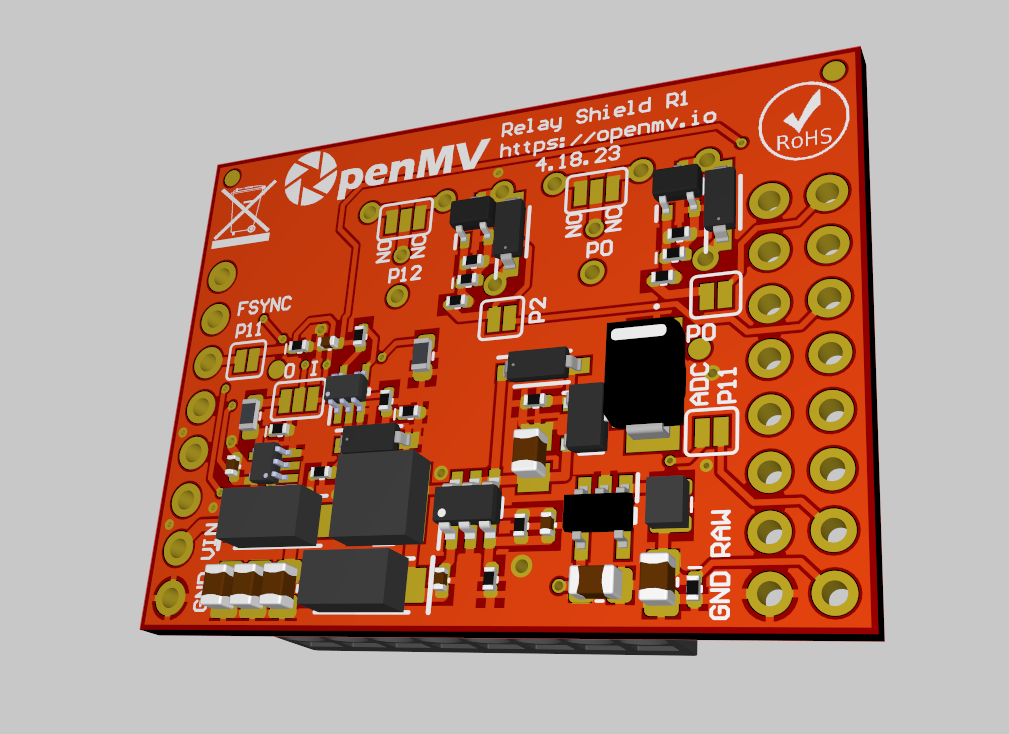
Why make the Relay Shield? Well, while the Driver Shield can generally drive everything you need and the relay shield can cover the rest. My original idea was to have MUCH more heavy duty relays onboard. However, I wanted the shield to be stackable. So, we're using the biggest relays on the market that fit.
What about Galvanic Isolation?
You may have noticed that our shields are designed with features in mind to meet the needs of industrial customers. This is because the OpenMV Cam has started to appear a lot more in factories. So, we're trying to make that integration easier. Additionally, industrial features are just... nice. Having a robust power supply that can handle some abuse means you don't have to worry about your OpenMV Cam breaking easily. The chips and components required for this are inexpensive and small.
However, Galvanic Isolation is a different beast. Components are expensive and physically very large. For example, IEEE 802.3af requires the PoE shield to have galvanic isolation which makes the shield huge (and more expensive).
So, as a tradeoff, our current shield lineup brings features from the industrial world to the OpenMV Cam except for Galvanic Isolation unless required.
Cool, when will these be available?
We've ordered prototypes of the six shields above from MacroFab. We'll get and test them after getting the OpenMV Cam RT. However, we'll focus on mass production of the new shields after launching the OpenMV Cam RT successfully.
Other Stuff
The Cortex SIMD instructions are nice. It's possible to do automatic white balance onboard the camera using the CPU and SIMD instructions with no frame rate loss on a color version of the global shutter sensor at full-res:
Anyway, that's all folks. Thanks for reading!

